 The past haunts Richard Nixon's library 洛杉矶时报对逐毛的报道
The past haunts Richard Nixon's library 洛杉矶时报对逐毛的报道Once privately run, the Yorba Linda presidential museum is making a transition to government operation. And that has turned statues of Mao Tse-tung and Chou En-lai into political footballs.
Timothy Naftali, director of the Richard Nixon Presidential Library and Museum in Yorba Linda, stands amid statues in an exhibit called World Leaders, which was installed when the museum was privately owned. Two of the statues -- depicting a seated Chou En-lai, left, and Mao Tse-tung, right -- have raised the hackles of an anti-Communist activist. (Allen J. Schaben / Los Angeles Times)
By Mike Anton
September 30, 2009 | 10:59 a.m.
The statues depict two old men relaxing in easy chairs. As others mill about the drawing room, the men engage in conversation, one gesturing at the other to underscore a point. For nearly 20 years the likenesses of China's Communist leaders Mao Tse-tung and Chou En-lai have sat perfectly still inside the Richard Nixon Presidential Library and Museum in Yorba Linda.
Now, they are creating a stir.
They are among 10 statues of former heads of state on display in the library's World Leaders exhibit. Others include Soviet leaders Nikita Khrushchev and Leonid Brezhnev; Egypt's Anwar Sadat and Israel's Golda Meir; and France's Charles de Gaulle and Britain's Winston Churchill. Nixon chose them before his $21-million privately funded library opened in 1990.
A quote from Nixon on a wall explains his selections: "They are leaders who have made a difference. Not because they wished it, but because they willed it."
In recent months, though, a sign with an alternate message has greeted visitors -- one Nixon most likely would not have approved: "Why are these leaders here? The presence of the statues in this gallery does not imply that the United States government, which has operated this museum since July 2007, takes a position on their legacies."
For the library, the dueling messages are a reminder that the road from a privately run attraction ridiculed for spinning Nixon's legacy to a scholarly institution run by the National Archives and Records Administration is going to be long and complicated.
This latest example has its roots in the anti-communist advocacy of Kai Chen, a 56-year-old Los Angeles real estate investor and former China national basketball team member. Last year, he and his American-born wife visited the Nixon library and were "appalled and shocked" at the juxtaposition of Mao and Chou in a pantheon of world leaders.
"I wasn't expecting that. My wife and I just wanted to enjoy the day," he said. "I protested right there to the library service people. It bothered me so much."
Chen said family and friends were victims of communist purges during Mao's nearly 30 years in power. His abuses, Chen said, have been obscured by the Chinese government in its move to modernize and join the global economy. And don't get him started on Mao's visage as a kitschy pop culture icon.
"Mao was the biggest mass murderer in human history," Chen said, his volume set to high. "His hands were dipped in the blood of American soldiers who fought in Korea and Vietnam. How can that image be put alongside world leaders like Winston Churchill and De Gaulle? It's a perversion of American freedom. You don't put an anti-American symbol in a U.S. museum."
Chen said he has no quarrel with the communist leaders being part of the library -- after all, one of Nixon's biggest accomplishments was his 1972 visit to China, which paved the way to normalized relations with the U.S.
It is context that counts, he said. In 2007, a phone call from a livid Chen prompted Alhambra officials to remove a painting of Mao displayed in City Hall as part of a Chinese New Year festival. After his Nixon library trip, Chen complained to National Archives officials and began circulating a petition seeking removal of the statues. Chen said he has collected more than 200 signatures from around the globe. (No. 5 on the list is a Mr. Gao from Inner Mongolia.)
Chen and supporters plan to protest at the Nixon library Thursday -- the 60th anniversary of the People's Republic of China, a day Chen hopes will become the first "Day of Eradicating Mao From Our Lives."
"They have a right to," said Timothy Naftali, the library's director.
Naftali is the Harvard-educated Cold War scholar hired by the government to guide the transition of what was the nation's only private presidential library into a public institution where Nixon's White House papers -- long withheld by the National Archives -- will find a permanent home next year.
Chen found a sympathetic ear in Naftali.
The scholar laughs when he refers to himself as "the director of a federal museum with more communist statues than any other." He has five; a second statue of Chou about to shake hands with Nixon stands in an adjoining gallery.
But Naftali's point is serious.
"I think having a statue of a person in a museum can imply respect," he said. "I thought there might very well be confusion among visitors. With Churchill, Meir and Sadat all in the same room, there is an equivalency there and the implication that they're all alike. They were not all alike. Mao was a mass murderer.
"It seemed to me out of place in a publicly funded museum," Naftali added. "I don't think it's the best way to teach history."
Chen said he appreciates the sentiment, but won't be satisfied until the statues are gone. Naftali said he plans to overhaul the World Leaders exhibit, but how and when haven't been discussed. He is still at work on his first big overhaul, a historically accurate exhibit on the Watergate scandal, which the library's former storytellers saw as a "coup" by Nixon's political enemies.
Mao will always be part of the Nixon library -- "I don't believe in making people disappear," Naftali said -- but his statue may not.
And that doesn't sit well with one constituency: a fair number of the nearly 200 volunteer docents who are witnessing a history endorsed by their hero rewritten before their eyes.
"The most difficult part for us is that Tim's attitude is that this is supposed to be a bipartisan place," said Georgia Mallory, 62, who has guided visitors at the Nixon library for 16 years -- more than 1,850 hours, according to her lapel badge.
"What we're being told is that what we've been doing here is insignificant and wrong, that we've been telling the story incorrectly, that sort of thing," Mallory said. "We told it that way because it was history. . . . We knew it was factual. . . . This is the Richard Nixon library."
Naftali is sensitive about this -- to a point.
"You've got to understand: I'm changing a culture here," he said. "There are people who are upset at any changes we make -- small, medium or large -- because they like the way things were. For those people who were involved with this place when it was a private institution, this is a chaotic time. I understand that. I respect that. But we have to move forward."
Bill Goetsch, a docent who is old enough to have voted for Nixon as vice president, says the faithful like him are meeting that move forward with trepidation.
"We question, in our own minds, what else is going to happen here," Goetsch said.
Well, since you asked. . . .
When the Watergate overhaul is finished, Naftali plans to tackle new exhibits on Nixon's effect on domestic affairs and his post-presidency.
Other signs of change are found in glass cases where Nixon's perspectives on the Vietnam War and the 1970 killing of four students at Kent State University have been replaced by placards that read "Exhibit Under Renovation."
"You wouldn't have known that the Ohio National Guard killed those students," Naftali said of the Kent State exhibit that was removed. "You could have concluded that they shot themselves."
mike.anton@latimes.com
Copyright © 2009, The Los Angeles Times






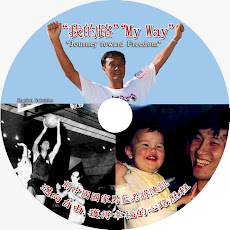


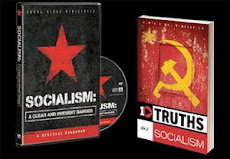




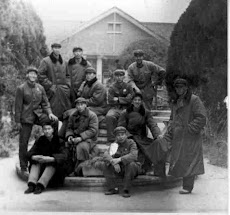


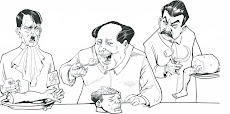
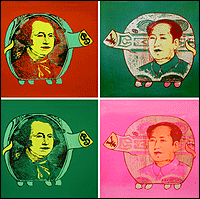
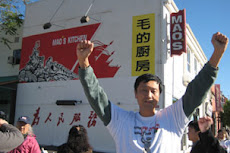


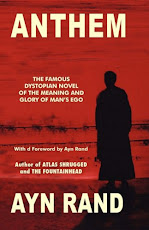










1 comment:
Arguing with history?
Re “Nixon’s legacy haunts his library,” Oct. 1
Statues of world leaders in the Nixon library do not glorify them. They are simply a small part of U.S. history during the Nixon administration.
Why now, after 20 years and thousands of visitors, because of one person's complaint, will the library be "haunted"?
What about the rest of us who enjoy history? The issue is being blown way out of proportion.
Nis Helmer
Brea
Denying the impact that President Nixon had on U.S.-Chinese diplomatic relations is denying history.
The statues of Mao Tse-tung and Chou En-lai at the Richard Nixon Library and Museum are symbolic of Nixon's accomplishment in opening the cultural and political discourse between these two powerful countries.
The location is, after all, a museum -- a place to learn about and honor history. Leave the statues where they are.
Karen Beckman
Santa Ana
I am not Chinese, but I understand Kai Chen's outrage.
Statues of Mao, Stalin, Pol Pot or any mass murderer should not be in a U.S. museum. Communist governments can blind their own people but not Americans.
Son Tran
Diamond Bar
Nixon's legacy tarnished by including murderous Mao's statue in his presidential library?
Mao and Nixon deserve each other -- two tyrants who undermined democracy and used state power to disguise their treachery whenever it suited them.
Al Senia
Aliso Viejo
Post a Comment